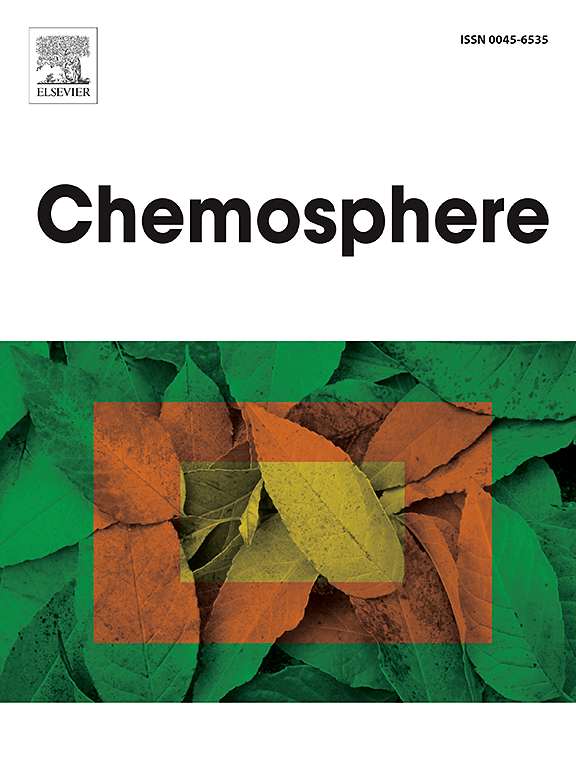Magnetite/reduced graphene oxide composites: A sustainable strategy for selenium immobilization and improved corn growth
IF 8.1
2区 环境科学与生态学
Q1 ENVIRONMENTAL SCIENCES
引用次数: 0
Abstract
This study investigated the effectiveness of magnetite/reduced graphene oxide (MRGO) in immobilizing selenium (Se) in contaminated soils and its impact on corn (Zea mays) growth and nutrient uptake. A factorial experiment was conducted in a completely randomized design with three replications under greenhouse conditions. Soil samples were contaminated with sodium selenate at Se concentrations of 0, 2, 4, 8, 16, and 32 mg/kg, equilibrated for two months, and subsequently treated with MRGO at 0, 0.25, 0.5, and 1 %, followed by a three-month incubation period. Corn plants were then cultivated from the seedling stage to the vegetative phase, and growth parameters, along with Se and nutrient concentrations in roots and shoots, were analyzed. MRGO significantly enhanced Se immobilization, increasing retention from 62–71 % to 82–90 % at 1 % MRGO. Se exhibited a biphasic effect on plant growth, promoting growth at 2 mg/kg but inducing toxicity at concentrations exceeding 4 mg/kg, leading to reduced biomass and nutrient uptake. MRGO mitigated Se toxicity by lowering Se accumulation in roots and shoots. However, in Se-free soils, higher MRGO levels negatively affected plant growth, likely due to nutrient adsorption. Trends in potassium (K), iron (Fe), and zinc (Zn) mirrored plant growth, peaking at 2 mg/kg Se and 1 % MRGO, whereas P (P) exhibited an inverse root-shoot distribution. These findings underscore MRGO's potential for Se immobilization in contaminated soils, improving plant performance at optimal Se levels. However, its application in Se-deficient soils requires careful management to prevent nutrient depletion (P, K, Zn, and Fe) and long-term declines in soil fertility.

求助全文
约1分钟内获得全文
求助全文
来源期刊

Chemosphere
环境科学-环境科学
CiteScore
15.80
自引率
8.00%
发文量
4975
审稿时长
3.4 months
期刊介绍:
Chemosphere, being an international multidisciplinary journal, is dedicated to publishing original communications and review articles on chemicals in the environment. The scope covers a wide range of topics, including the identification, quantification, behavior, fate, toxicology, treatment, and remediation of chemicals in the bio-, hydro-, litho-, and atmosphere, ensuring the broad dissemination of research in this field.
 求助内容:
求助内容: 应助结果提醒方式:
应助结果提醒方式:


